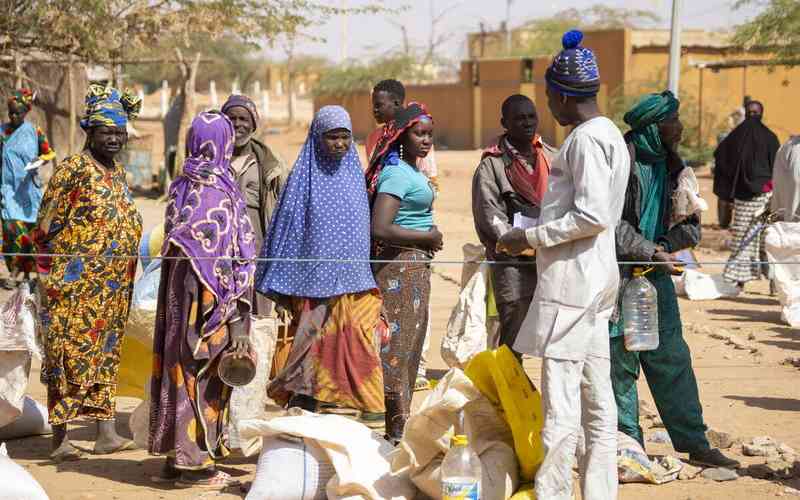As people move from rural areas to towns in search of better opportunities, accelerating urbanization brings new challenges. According to predictions from the Food and Agriculture Organization of the United States (FAO), we will house almost 5 billion people in our urban centres by 2030. More people in urban areas mean that more food must be provided. Feeding this population calls for innovation and commitments to improving food and nutritional demands.
The forthcoming 9th World Urban Forum ‘“Cities 2030, Cities for All: Implementing the New Urban Agenda”, in Kuala Lumpur, Malaysia, by UN-Habitat must go out of its ways and come up with concrete actions to ensure we have enough food for the growing urban populations.
A matter of urgency
Indeed, I believe that urban food security especially in Africa, should be placed high on the New Urban Agenda. It is a matter of life and death. According to the authors of the book For Hunger-proof Cities: Sustainable Urban Food Systems, an estimated 35,000 people around the world die each day from hunger and an even larger number of people (mainly women and children and the elderly) suffer from malnutrition.
Overall, the New Urban Agenda needs to charter in a new food security narrative.
The international development community too often solely focuses on small farmer agricultural productivity in rural Africa, but these are no longer just rural concerns.
They are serious urban problems requiring immediate attention, new discourse, innovative solutions and financial support. Sustainable urban food ecosystem needs to be at the front of the agenda, including how we grow it, how we sell it and how we cook it.
One area that the New Urban Agenda could focus on are traditional food crops and the future of harnessing that to provide the required nutritional values for the growing urban centres.
The 10,000 gardens in Africa Initiative, promoted by the SlowFood movement, has an objective of creating 10,000 gardens across the continent. Kenya is leading so far, with 368 gardens of the 3,000 gardens established across the continent to date.
The SlowFood movement also works on the mobilization of a network of young African leaders dedicated to preserving biodiversity, traditional knowledge and food culture like pumpkin (malenge), and small-scale agriculture. The movement ‘s Ark of Taste, an online catalogue of indigenous food that are getting extinct, has over 2,500 products.
Under this programme and directory, my favourite malenge, the Lare pumpkin from Njoro in Nakuru, is one selected crop. It is under serious threat of extinction due to a bad reputation for a long time, including when I was growing up, even though it has many uses.
It has a high yield, with both fruit and the leaves being edible, it adapts to extreme arid conditions, and its mulch for the soils and provides food for the bees. The leaves are used as a vegetable in many dishes such as ‘kimito’, a dish of pumpkin leaves, potatoes and broad beans.
Due to its highly nutritious properties, it is used in making light food for infants and the elderly. It is used to make a juice, and the seeds are edible when boiled or dried and milled to make a flour used in porridge and for medicinal purposes.
The dying pumpkin
Due to its resilience, this pumpkin can be tailored for urban hedges and roof gardening, and provide the much-needed relief of the looming urban food insecurity. Bringing this crop back from near-extinction could help reduce food shortages.
Stay informed. Subscribe to our newsletter
Indigenous and nutritious vegetables like the pigweed can play a role in feeding the urban populations. You now spot on our supermarket stores vegetables like ‘mchicha’ Amaranthus spp, ‘managu’ Solanum nigrum and ‘thageti’ Cleome gynandra, mainly supplied from the rural areas.
When I was growing up, most of these vegetables were wild. We could go down to the fields during the rainy seasons and just pick enough for the evening, with clear specifications to pick the sprouting ones before they develop flowers. Sometimes I almost thought they were wild herbs, with the bitterness and their sour taste.
From the wild to the
Three decades later these vegetables are now a luxury product and we get it at a premium in our cities, because of their scarcity. Urban authorities with the support of UN Habitat should focus on reclaiming such products under urban agriculture in a sustainable way.
This could be through vertical gardening and roof cropping to optimise food access. We are working with SlowFood movement to have them classified in the ‘ark of taste’.
These are examples of the innovative initiatives that can help solve the food shortage in urban areas. Indeed, they are critical.
Mr Kuria is an Aspen Institute New Voices Fellow and a PhD researcher on project management in Kenya [email protected]
 The Standard Group Plc is a
multi-media organization with investments in media platforms spanning newspaper
print operations, television, radio broadcasting, digital and online services. The
Standard Group is recognized as a leading multi-media house in Kenya with a key
influence in matters of national and international interest.
The Standard Group Plc is a
multi-media organization with investments in media platforms spanning newspaper
print operations, television, radio broadcasting, digital and online services. The
Standard Group is recognized as a leading multi-media house in Kenya with a key
influence in matters of national and international interest.
 The Standard Group Plc is a
multi-media organization with investments in media platforms spanning newspaper
print operations, television, radio broadcasting, digital and online services. The
Standard Group is recognized as a leading multi-media house in Kenya with a key
influence in matters of national and international interest.
The Standard Group Plc is a
multi-media organization with investments in media platforms spanning newspaper
print operations, television, radio broadcasting, digital and online services. The
Standard Group is recognized as a leading multi-media house in Kenya with a key
influence in matters of national and international interest.






